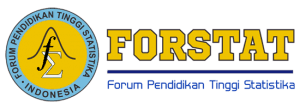IMPLEMENTASI ALGORITMA NAÃVE BAYES CLASSIFIER DAN SUPPORT VECTOR MACHINE PADA KLASIFIKASI SENTIMEN REVIEW LAYANAN TELEMEDICINE HALODOC
Abstract
Halodoc is a telemedicine-based healthcare application that connects patients with health practitioners such as doctors, pharmacies, and laboratories. There are some comments from halodoc users, both positive and negative comments. This indicates the public's concern for the Halodoc application so it is necessary to analyze the sentiment or comments that appear on the Halodoc application service, especially during the COVID-19 pandemic in order for Halodoc application services to be better. The Naïve Bayes Classifier (NBC) and Support Vector Machine (SVM) algorithms are used to analyze the public sentiment of Halodoc's telemedicine service application users. The negative category sentiment classification result was 12.33%, while the positive category sentiment was 87.67% from 5,687 reviews which means that the positive review sentiment is more than the negative review sentiment. The accuracy performance of the Naive Bayes Classifier Algorithm resulted in an accuracy rate of 87.77% with an AUC value of 57.11% and a G-Mean of 40.08%, while svm algorithm with KERNEL RBF had an accuracy value of 86.1% with an AUC value of 60.149% and a G-Mean value of 49.311%. Based on the accuracy value of the model can be known SVM Kernel RBF model better than NBC on classifying the review of user sentiment of halodoc telemedicine service
Keywords
Full Text:
PDFReferences
Aggarwal, C. C. (2018), Machine learning for text, Machine Learning for Text. https://doi.org/10.1007/978-3-319-73531-3.
Coelho, K. R. (2011), "Identifying Telemedicine Services to Improve Access to Specialty Care for the Underserved in the San Francisco Safety Net" International Journal of Telemedicine and Applications, 2011, 1-14. https://doi.org/10.1155/2011/523161.
Faisal, M. R., and Nugrahadi, D. T. (2017), Belajar Data Science: Klasifikasi dengan Bahasa Pemrograman R, Kalimantan Selatan: Scripta Cendekia.
Fellows, I. (2012), "Wordcloud: Word clouds" R package version.
Fitri, A. (2020), "Selama pandemi covid-19, instalasi Halodoc meningkat 10 kali lipat" Kontan, Available athttps://kesehatan.kontan.co.id/news/selama-pandemi-covid-19-instalasi-halodoc-meningkat-10-kali-lipat.
Liu, B. (2010), "Sentiment Analysis and Subjectivity in: Handbook of Natural Language Processing, Second Edition" Handbook of Natural Language Processing, Second Edition, 2.
Nasution, M. R. A., and Hayaty, M. (2019), "Perbandingan Akurasi dan Waktu Proses Algoritma K-NN dan SVM dalam Analisis Sentimen Twitter" Jurnal Informatika, 6, 226-235. https://doi.org/10.31311/ji.v6i2.5129.
Prasetyo, E. (2012), Data Mining: konsep dan aplikasi menggunakan MATLAB, Yogyakarta: Andi.
Santosa, B. (2007), Data Mining Teknik Pemanfaatan Data untuk Keperluan Bisnis, Yogyakarta: Graha Ilmu.
Vapnik, V., Golowich, S. E., and Smola, A. (1997), "Support vector method for function approximation, regression estimation, and signal processing" in Advances in Neural Information Processing Systems.
Wardani, N. R., and Erfina, A. (2021), "Analisis Sentimen Masyarakat Terhadap Layanan Konsultasi Dokter Menggunakan Algoritma Naive Bayes" in Seminar Nasional Sistem Informasi dan Manajemen Informatika, Universitas Nusa Putra, pp. 11-18.
DOI: https://doi.org/10.34312/jjps.v2i2.11364
Refbacks
- There are currently no refbacks.
Copyright (c) 2021 Jambura Journal of Probability and Statistics

This work is licensed under a Creative Commons Attribution-NonCommercial 4.0 International License.







.jpg)






